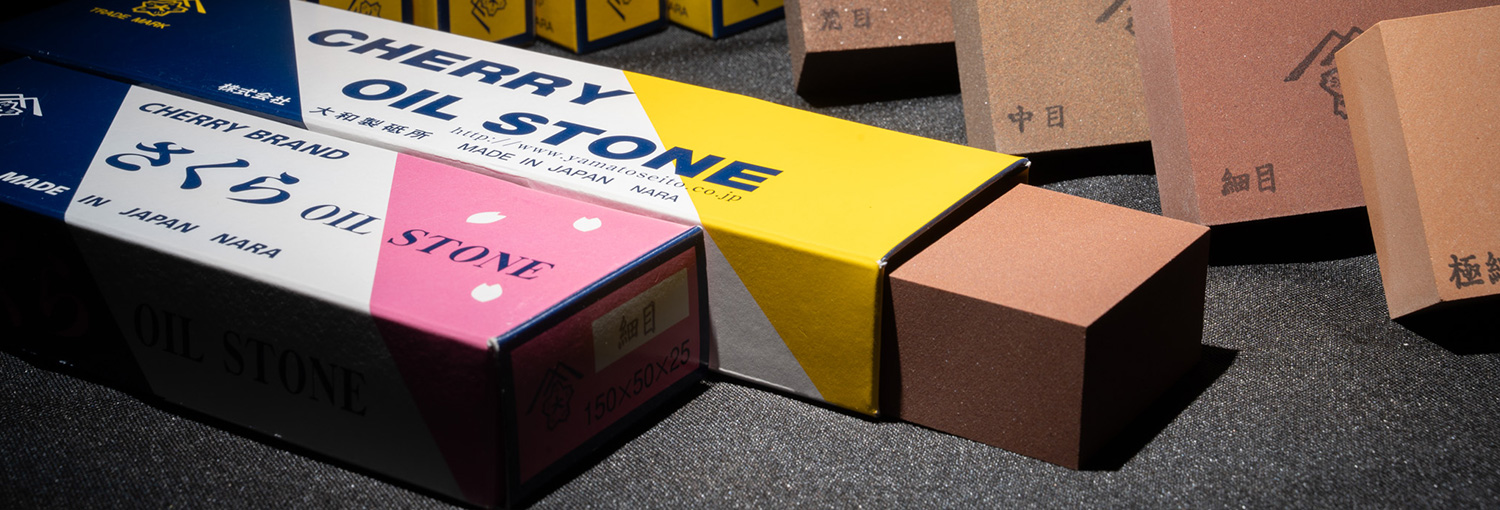Honing Stone
Honing is also called horn finishing. It is a type of surface finishing method along with lapping and super-finishing, and has developed as a method for machining the inner surface of cylinders.
In this method, a grinding wheel is attached to a cylindrical tool called a horn, and the wheel is pressed against the inside of the cylindrical workpiece with appropriate pressure to give it a rotary and reciprocating motion, while pouring grinding fluid to finish the surface.
Product Details
▼ Applications of Honing
Used for the inner surfaces of cylinders in engines, hydraulic systems, pneumatic systems, and drum brakes.
Primarily used for precision finishing of the inner surfaces of cylindrical materials, joints, and sliding surfaces.
▼ Characteristics of Honing
- ① The cross-hatch pattern created by the rotational and reciprocating motion in honing serves as an oil reservoir during product use, improving lubrication and sliding performance.
- ② Compared to methods like internal surface grinding, honing has significantly higher grinding efficiency and is more productive.
- ③ It can process even small-diameter, long workpieces.
- ④ Honing is a highly precise process with simple machine structures, ensuring excellent surface finish and dimensional accuracy (cylindricity, roundness) that is easy to manage.
- ⑤ The resulting high-precision surface has minimal alteration or heat-affected layers, offering excellent wear resistance.
▼ Selection of Honing Stones
- ① Abrasives: Choose abrasives based on the workpiece material.
- WA, C, GC, SD, CBN
- ② Grit Size: Select based on the roughness of the process.
- General abrasives (WA, C, GC): #60–#6000
- Superabrasives (SD, CBN): #60–#10000
- ③ Bonding: Since each abrasive grain bears a significant load, a strong bond is required. However, to prevent clogging, bonds generally range from G to K.
- ④ Treatment: Lower the bonding strength to improve cutting ability and reinforce resistance to chipping or breaking during processing.
● Sulfur (S) Treatment
Sulfur treatment improves durability without significantly reducing grinding performance.
The downside is its corrosive nature and the dissolution of sulfur in grinding fluids, shortening fluid life.
● Bake (B) Treatment
Bake treatment involves resin coating the grinding stone to enhance durability and prevent grain shedding.
The downside is the increased likelihood of clogging, making it challenging to optimize working conditions.
In recent years, superabrasives have become more prevalent, especially for small diameters, improving grinding efficiency and durability, thereby enhancing productivity.
For honing, metal bonds are most commonly used, operating at higher speeds and pressures than general abrasive stones, offering a hybrid between grinding and cutting.
▼ Advantages and Disadvantages of Metal-Bonded CBN and SD
◎ Advantages
- ① Long service life reduces the frequency of stone replacement, increasing operating time and productivity.
- ② Enables labor-saving operations such as unmanned machining.
- ③ Both grinding and workpiece debris can be handled by the same magnetic filter.
- ④ Noise during honing is reduced.
- ⑤ Materials that were previously difficult to grind with general abrasives, or processes with low efficiency, can be easily ground.
◎ Disadvantages
- ① Grinding stone costs are often higher compared to general grinding stones, increasing overall processing costs.
- ② Compared to general abrasives, the workpiece surface may be more prone to tearing or surface alteration layers may appear.
- ③ It may be difficult for the stone to adapt to the initial shape of the workpiece, increasing the risk of deep scratches.
- ④ High-speed, high-pressure processing conditions require machines with high rigidity.

